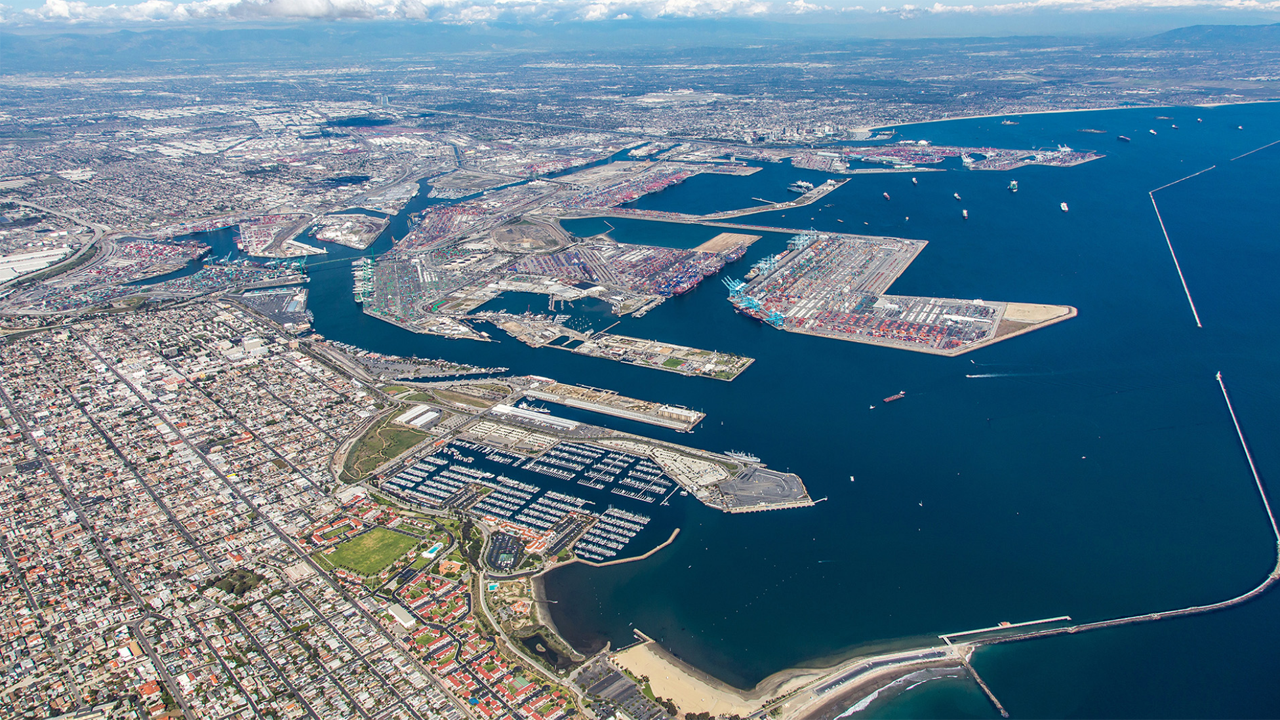
Port of LA: Cargo Volume Remains Soft
Written by Marybeth Luczak, Executive Editor
Aerial view of the San Pedro Bay Port Complex in California. (Photograph Courtesy of Port of Los Angeles)
October cargo volume at the Port of Los Angeles was down 25% from the same month last year; September and August saw similar drops.
The Port on Nov. 15 reported that it processed 678,429 TEUs (twenty-foot equivalent units) in October 2022. During the first 10 months of the year, it handled 8,542,944 TEUs, down roughly 6% from what it called “last year’s record pace.”

October 2022 loaded imports reached 336,307 TEUs, a 28% decrease from the prior-year period. Loaded exports came in at 89,722 TEUs, an 8.7% decline compared with last October. Empty containers landed at 252,401 TEUs, a 25% year-over-year fall-off.
“With cargo owners bringing goods in early this year, our peak season was in June [which edged out last year as the best June in the Port’s 115-year history] and July [which beat by 2.5% the previous record set in 2019] instead of September [down 21.5%] and October,” said Gene Seroka, Executive Director of the Port of Los Angeles, which handled an estimated 806,000 TEUs in August, approximately 15% less than the same period a year ago. “Additionally, cargo has shifted away from the West Coast as some shippers await the conclusion of labor contract negotiations. We’ll do everything in our power to get that cargo back because the best route between Asia and the United States is straight through the Port of Los Angeles.” Seroka on Nov. 15 was joined for a briefing by Los Angeles Mayor Eric Garcetti and Dr. Jerry Nickelsburg, Director of the UCLA Anderson Forecast, to discuss volumes; watch below.
California’s Port of Long Beach experienced a similar decline in October. It reported moving 658,428 TEUs of cargo for the month, down 16.6% from the year-ago period, citing as reasons for the decline “reduced consumer demand and a shift of imported goods toward the Gulf and East coasts.”



